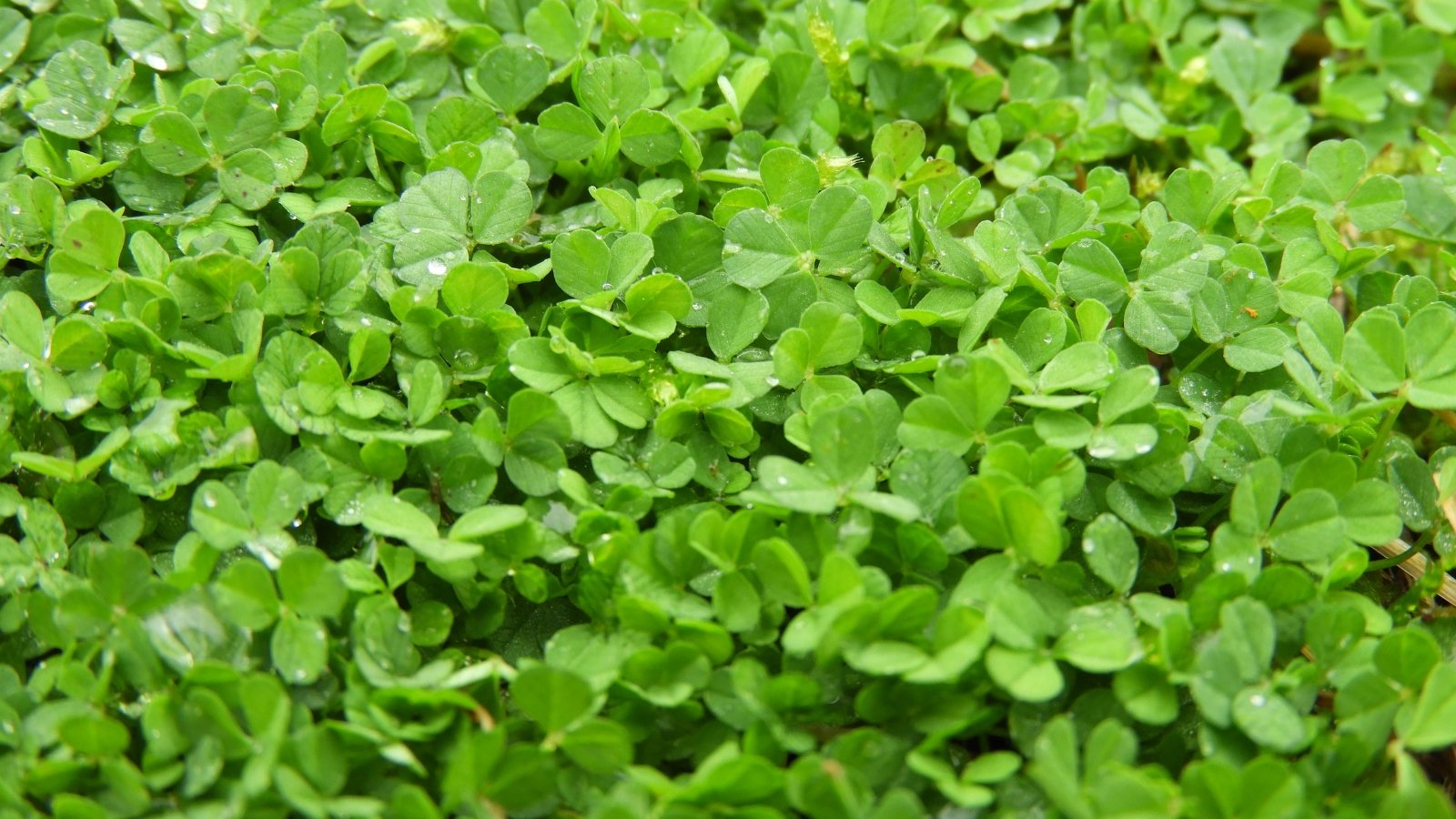The occasion away from typical grass lawns has been in full swing for a decade or further! Turfgrass is just too thirsty, fertilizer-hungry, chemically intensive, and high-maintenance for plenty of house owners. Should you occur to need an eco-friendly yard that’s simpler to deal with, a delightfully plush microclover might very successfully be your new favourite concern to stroll on.
Clover lawns aren’t new to landscaping, nonetheless they’re changing into trendier by the day. This information consists of every half that it’s essential to uncover out about altering your yard with cute and smart mini clover crops, plus a variety of ideas for avoiding pitfalls in the course of the shift away from grass.
What’s Microclover?
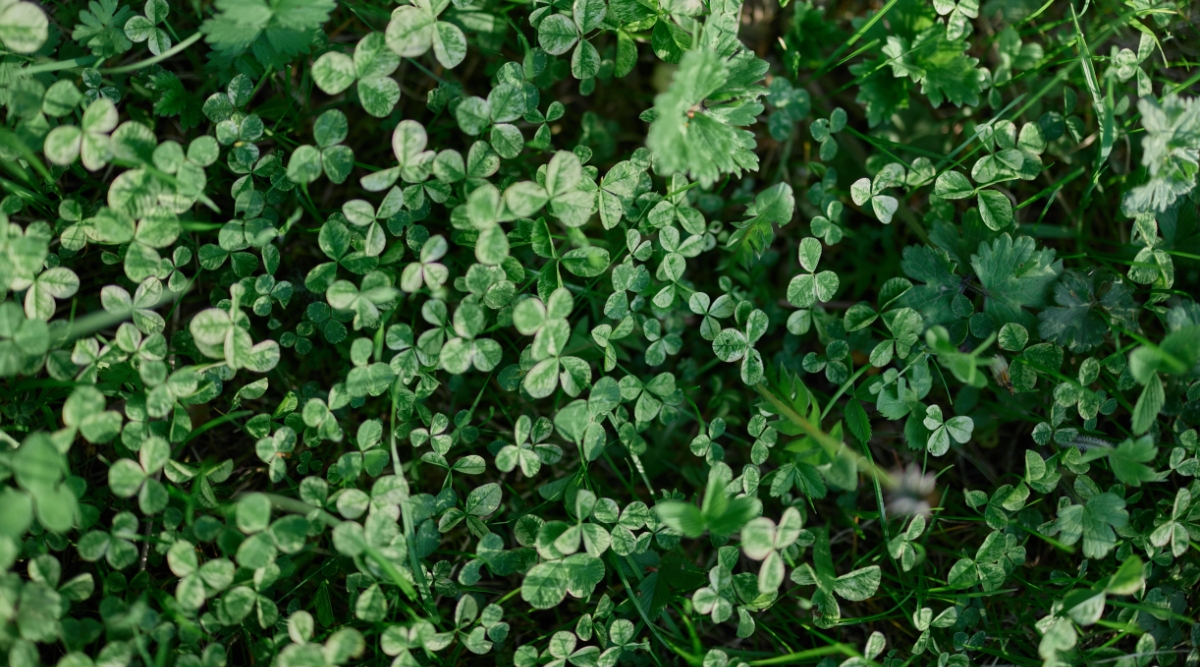

Microclover is a miniature model of white clover (Trifolium repens), developed notably as a yard varied. It’s drought-tolerant and creates a symbiotic relationship with underground micro organism to revive nitrogen. This implies it doesn’t want irrigation, fertilizer, or intensive upkeep. Microclover is decrease rising, further tolerant of foot site visitors, and has tiny leaves for a singular yard texture than widespread clover.
This yard varied has flip into more and more extra well-liked in Europe and areas of the US that face excessive drought and water restrictions throughout the summertime. By altering your yard with microclover, you will profit from a lush carpet-like yard that’s further sustainable and cut back upkeep than turf grass.
Execs and Cons of a Microclover Yard Assorted
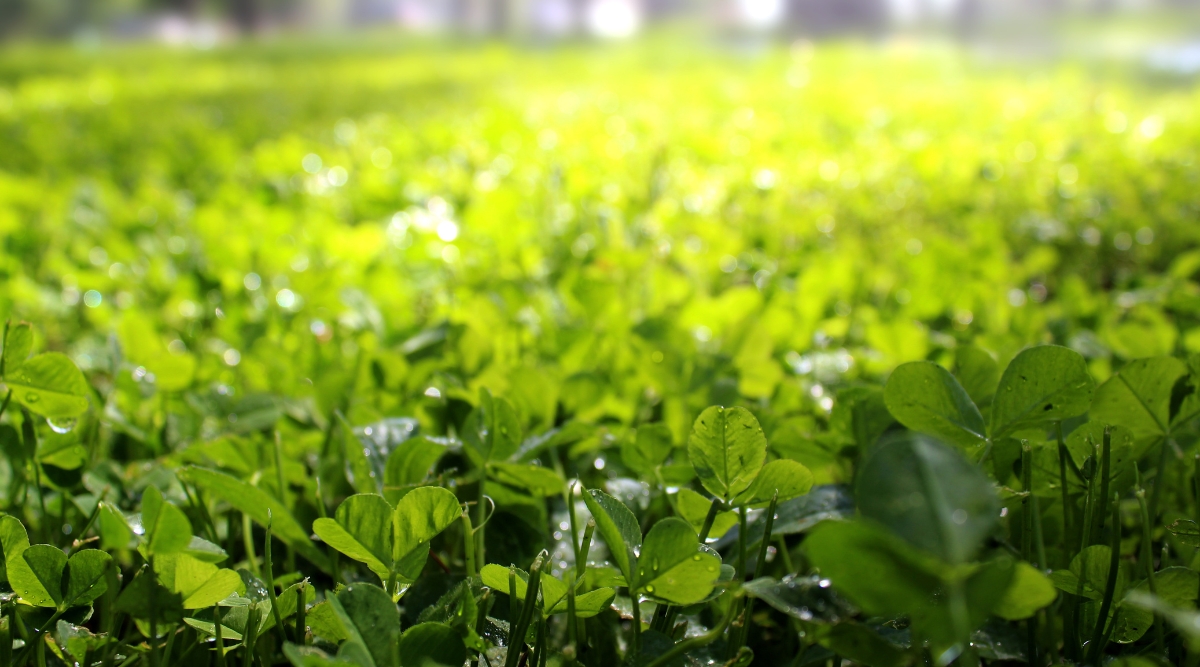

Prior to you cowl your yard in clover, likelihood is excessive it would be best to know the professionals and cons of this quite a few landscaping method. An vital benefits are ecological (so much a lot much less water, no fertilizer, no chemical substances), and the drawbacks are primarily associated to aesthetics and upkeep.
Microclover’s strongest promoting stage is its water conservation. Summer season season drought is more and more extra widespread all by America, inflicting unpleasant lifeless grass lawns. Contemplating that over 60% of residential water use goes to irrigation, one factor you’ll do to cut once more your panorama’s water needs is a bonus.
What throughout the event it’s possible you’ll get the perfect of each worlds: a water-wise panorama and a fairly inexperienced summer time season yard? Microclover is a beautiful reply due to most areas obtained’t ought to water it in the slightest degree. Clover lawns are so drought-tolerant that they’ve flip proper right into a crucial analysis matter in excessive arid climates like Iran.
Nonetheless, no yard reply is correct. Microclover will go dormant after the frost and can flip brown all through the winter. It nonetheless requires some upkeep, albeit far lower than your grass yard. It takes some frontloaded effort to seek out out and will require re-seeding each few years.
Here’s a less complicated take a look at a clover yard’s advantages and disadvantages:
| Execs | Cons |
| Drought-tolerant (no irrigation wished as rapidly as established) | Effort and labor required to seek out out the yard |
| Stays inexperienced with out water all summer time season | Winter dormancy can flip leaves brown |
| Proof in the direction of canine waste (stays inexperienced no matter pee or poo) | Totally completely totally different aesthetic than grass |
| Low upkeep (stays 4-6”) | Re-seeding is required each 2-3 years |
| Tolerates shut mowing (2-3”) | Loads a lot much less foot site visitors tolerance than grass |
| Nitrogen fixation (no fertilizer wished) | Not good for sandy soil |
| Weed suppression (dense development) | You possibly can’t use broadleaf herbicides (nonetheless it’s better for the surroundings!) |
Easy methods to Change Your Yard with Microclover in 8 Easy Steps
Able to dive into an alternate eco-lawn? Microclover is prone to be merely as manicured as turfgrass and typically appears better than neighboring grass lawns all by way of summer time season droughts. These steps will set you up for fast success with this nitrogen-fixing, drought-tolerant groundcover.
1. Put collectively Your Yard and Take away the Grass
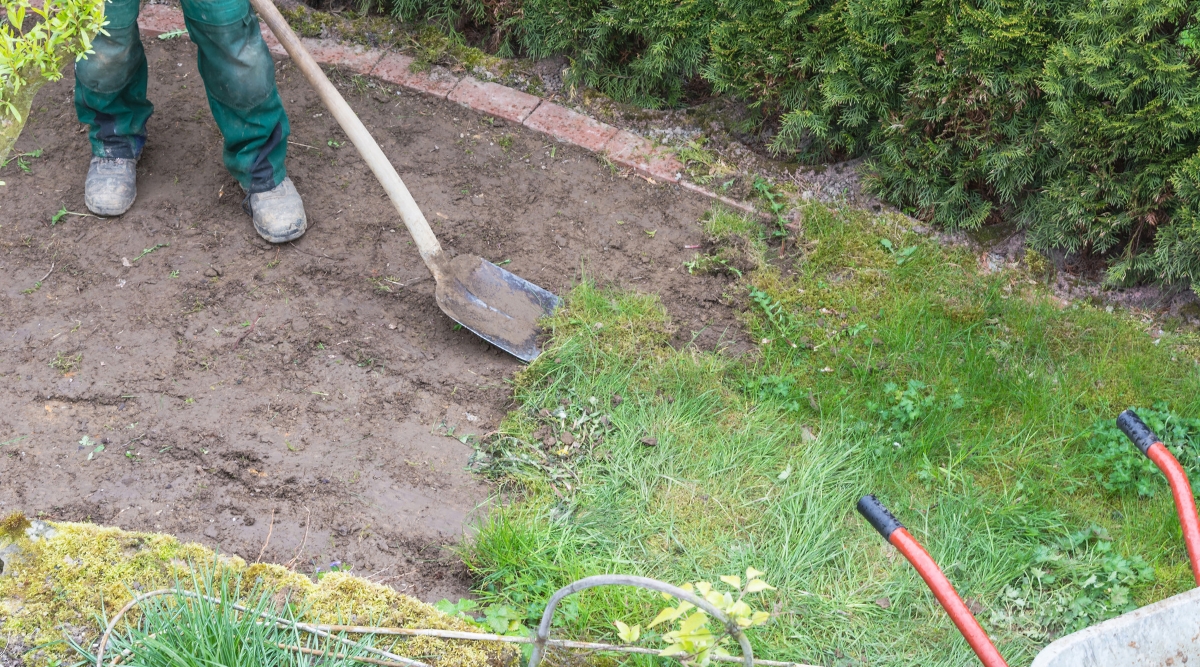

Appropriately preparing your yard is essential to fast and opulent clover institution. Sadly, seeding a mannequin new yard isn’t so simple as tossing seeds over your grass. The overseeding method under can work nonetheless nonetheless requires some preparation and is perhaps not as worthwhile. As a replacement, we suggest assessing your yard, smothering or eradicating the grass, after which transferring into soil modification.
Prior to you begin, take a look at the {photograph} voltaic facet of your yard. Excessively shady areas are not good candidates for microclover. This plant needs a minimal of 4 hours of photograph voltaic nonetheless does finest in full daylight. So long as the yard will get 4 to six hours of sunshine per day, you shouldn’t have a problem.
Relying on the successfully being and species of your yard grass, turf is prone to be terribly dense and aggressive. In case your grass is inexperienced and thick, overseeding (described under) seemingly obtained’t work. Eradicating or killing the grass is no doubt one of many best strategies to seek out out a pleasant seedbed to your clover.
You could have obtained a variety of choices for eradicating:
- Shovel: Use a shovel to dig up the grassroots (go down a minimal of 3-4”) and rip up as a lot grass as attainable. That is mainly in all probability probably the most labor-intensive nonetheless enables you to rapidly entry the soil beneath.
- Sod Cutter: Hire a sod cutter to cut the grass and its roots, then roll the sod up and take it to your yard waste bin.
- Tarp: This passive method entails laying an enormous tarp (or a variety of overlapping tarps) over the yard for 1-2 weeks. Crush the edges and coronary coronary heart to forestall it from blowing away. The shortage of daylight will inhibit photosynthesis and smother the grass. Should you occur to peel up the tarp, you will amend the soil and seed instantly.
- Rototiller: Use a rototiller to cut up the grass and overturn it into the native soil under. Keep away from this technique for those who’ve obtained fairly a number of perennial weeds like quackgrass, bindweed, or thistle. Tilling their roots might set off them to unfold vegetatively and set off a vast headache.
- Sheet Mulching: For passive no-till grass termination, use layers of newspaper and cardboard (no tape or shiny pages!) to smother the grass. This works equally to a tarp aside from that the mulch can decompose in place. Utterly soak the paper after laying it, and rapidly cowl it with a 2-3” layer of topsoil. Don’t do that on a windy day!
- Compost Layers: This method is the costliest nonetheless creates the richest soil and could also be crucial for these with intently compacted or sandy soil. First, mow the grass as little as attainable. Then import a variety of baggage of compost or a small truckload and rake it out over the yard till it’s 1-3” deep. I wouldn’t suggest this for an enormous yard.
When you don’t wish to take away your grass, you will attempt sowing the clover seed immediately into it. This method can work correctly if the grass is sparse and the soil beneath is pretty free. Nevertheless, clover might have a extraordinarily troublesome time germinating in tremendous thick mats of grass.
I solely suggest overseeding in case you is perhaps OK with a blended yard. Only a few of your current grass will develop up all through the clover and will outcompete a variety of the seeds. It’s unlikely for the clover to outcompete the entire grass.
For finest outcomes, mow the grass as little as attainable, then use a pointy rake to puncture fairly a number of shallow holes all through the sod. Use your palms or a handbook seeder to scatter clover seeds over the yard. You may mud a lightweight layer of soil or compost excessive. The seeds can’t be sown very deeply, or they obtained’t germinate. Water totally.
2. Plant on the Appropriate Time
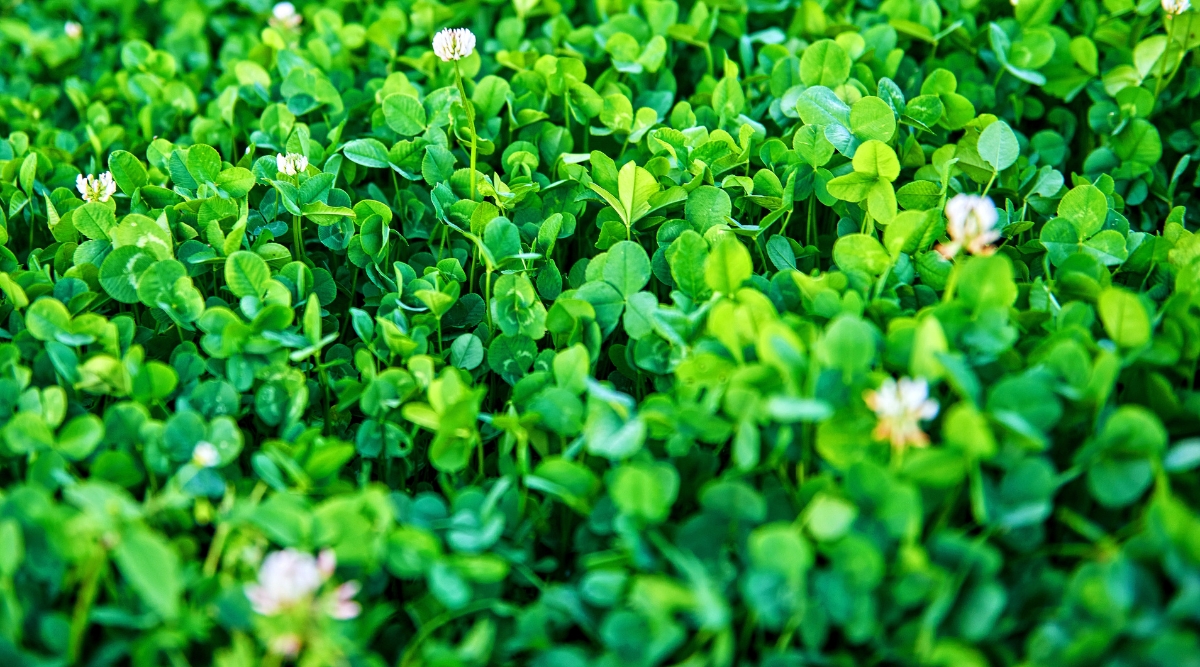

You possibly can plant a microclover yard all through the autumn or spring, ideally 4 weeks prior to your anticipated first frost all through the autumn or 2-4 weeks after your final frost date all through the spring. This cool-season perennial prefers to get established all by way of chilly, moist native climate. Whereas drought-tolerant, it needs quite a lot of rain or irrigation to get established.
Generally, the perfect time to plant is September through early October or March through Might. Have a look at your frost dates to confirm.
Put aside a Saturday or extended weekend to transition your yard. Mark your required planting date on the calendar and rely backward for 1-2 weeks to know when to begin soil preparation. Whereas you’ll do the whole yard transition in someday, preparing prematurely is way simpler, significantly throughout the event you’re terminating the grass utilizing one amongst many passive strategies described above.
3. Loosen the Soil
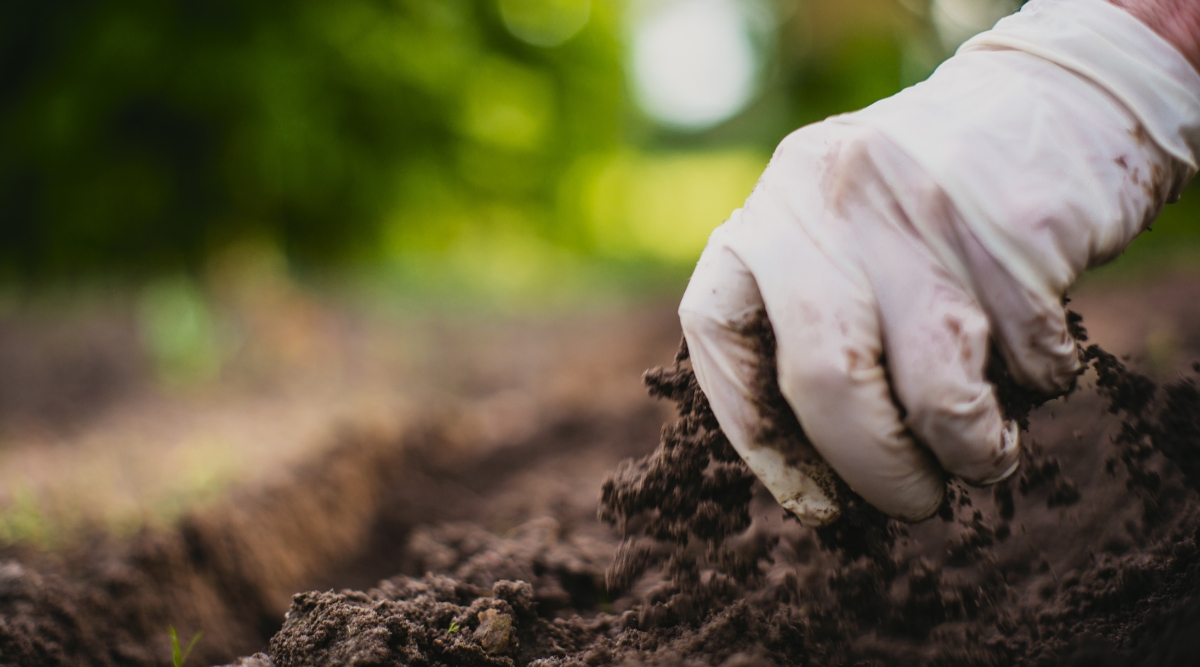

When you’ve killed or eradicated your grass, it’s essential to have entry to the native soil beneath. It’s good to put collectively the perfect 4-6” for microclover to seek out out vigorous roots. Dig a variety of shallow holes all through the coronary coronary heart to guage the feel and top of the range. Clover is just not tremendous choosy about soil nonetheless needs some fluffy aeration to germinate appropriately.
If the soil is tremendous heavy in clay or terribly compacted like concrete, I favor to recommend utilizing a shovel or broad fork to loosen the decrease layers and aerate it with out tilling. Alternatively, you will do a one-time shallow tillage with a rototiller to include air and water. Beware that tilling might set off further compaction throughout the event you don’t amend the soil appropriately.
4. Amend the Soil
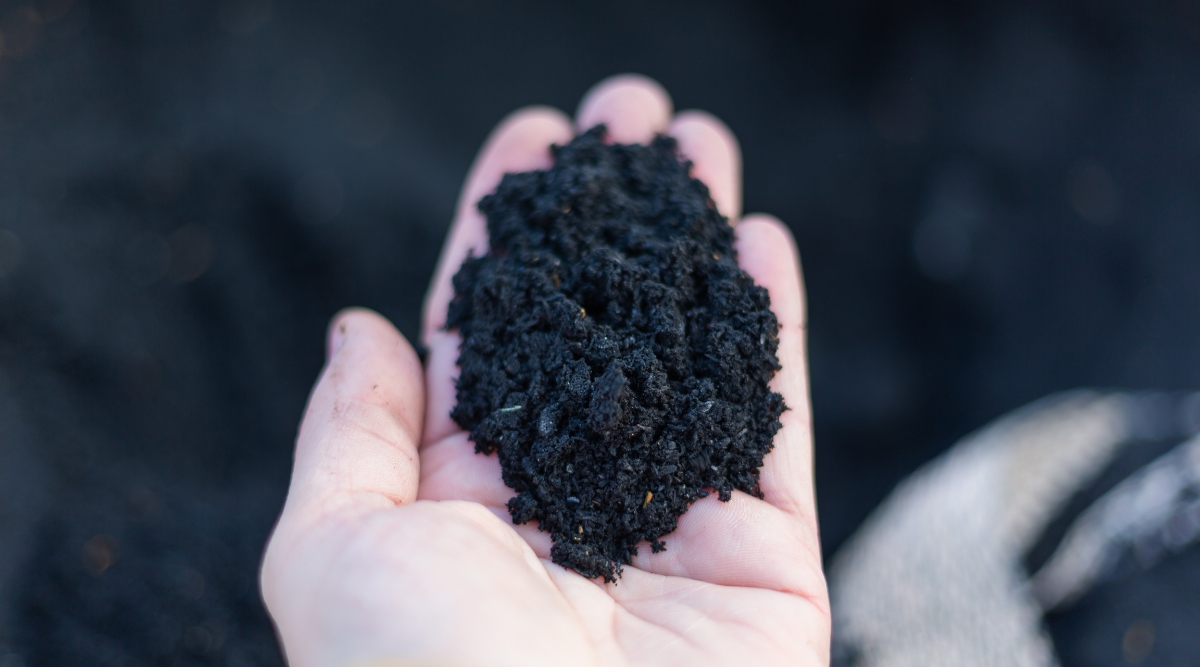

The ultimate phrase step prior to seeding is amending with compost and any pH alterations. No fertilizer is required! Compost can income nearly any soil variety, nonetheless you don’t ought to go overboard (or over funds) by along with as a lot compost as you’d in a vegetable mattress. Add a 1-2” layer of compost to the perfect of the soil and flippantly incorporate it with a shovel, broad fork, or tiller, if desired.
I’d solely suggest heavier features of compost in case your soil is very sandy or ultra-compacted. If the soil is alkaline (pH above 7.5), likelihood is excessive you’ll take into accounts incorporating peat moss reasonably than compost.
Microclover performs finest with a reasonably impartial pH between 6.0 to 7.0. In case your yard is already rising pretty healthful turf grass, likelihood is excessive extreme that the pH is inside this differ. Nevertheless when the grass appears to be struggling, it’s finest to make the most of an at-home soil study to confirm the pH is satisfactory.
- In case your soil is just too acidic, add agricultural lime, dolomite lime, or wooden ashes to boost the pH.
- In case your soil is just too alkaline, add elemental sulfur, peat moss, or a mineral acidifier like Espoma Pure Soil Acidifier to decrease the pH.
Be mindful, clover is pretty resilient and adaptable. There may be not a want to put together a pristine seed mattress, nonetheless a wonderful quantity of aeration will assist it carpet your yard quickly. Double-check that each one weeds are cleared prior to persevering with.
5. Broadcast Seeds and Flippantly Cowl
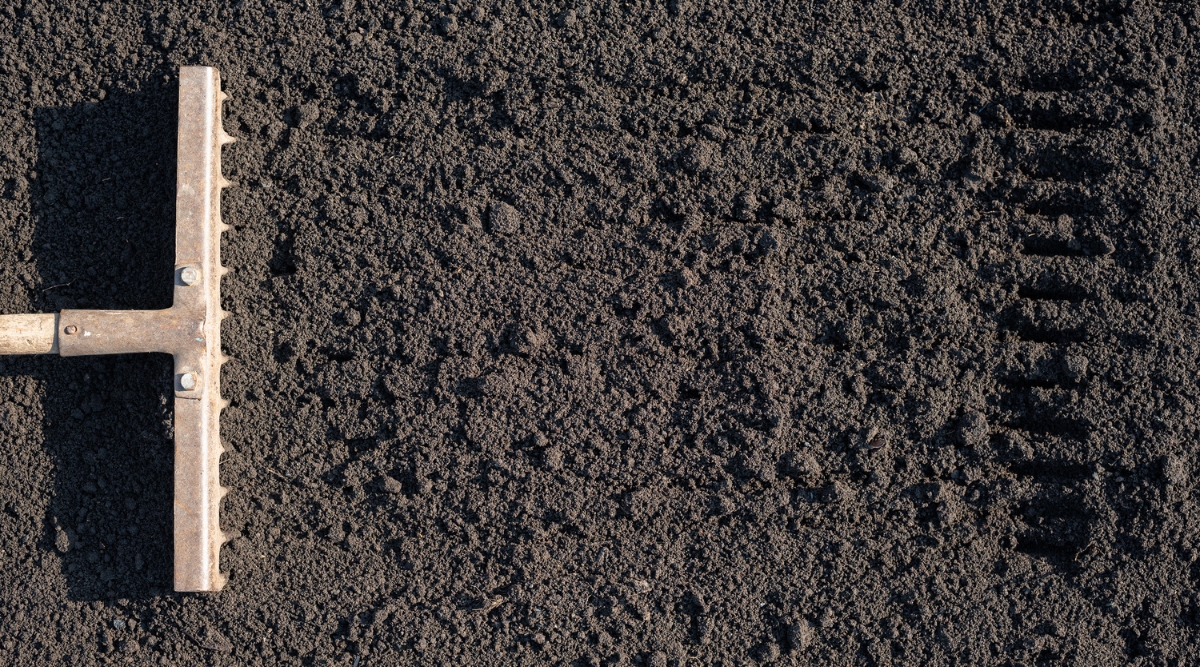

Lastly, the pleasurable half! Rake the soil simple and accumulate a bucket or handbook broadcast seeder. Be mindful to buy 100% pure microclover seed apart from you desire a grass-blended yard.
There’s some proof {{{that a}}} 50/50 clover and Kentucky bluegrass mix is best suited to northern climates the place clover goes dormant and turns brown all through the winter. You should purchase pre-blended clover yard seeds, otherwise you’ll combine the clover with the grass seed your self.
When you’ve obtained a small yard or an excellent larger funds, you will uncover microclover sod or seedling plugs to transplant in its place of seeding. Nevertheless, that is considerably costlier and is perhaps not in the marketplace in all areas.
Broadcasting means grabbing handfuls of the seed and tossing them all through the yard till you cowl the entire space. A handbook crank seeder helps scatter it further evenly. Every approach, the microclover must be sown pretty densely.
The usual sowing bills for a pure microclover yard are:
- ¼ kilos of seed for 250 sq. foot yard
- ½ pound for 500 sq. ft
- 1 pound for 1,000 sq. ft
- 5 kilos for five,000 sq. ft
- 5-10 kilos of microclover seed for a ten,000-square-foot or better yard
You possibly can frequently sow barely further densely to make sure that you fast security. Larger bills guarantee fuller security, nonetheless you may additionally wish to avoid shedding seeds for filling in bald areas a variety of weeks later.
Perceive that clover is aggressive, and it’ll rapidly smother weeds and any low-growing crops surrounding it. These crops unfold predominantly by stolons (runners), so it helps to have boundaries like brick or stone spherical your neighboring decorative beds. This prevents the clover from escaping your yard into the yard.
Seed the clover no deeper than ¼” into the soil. Generally, ⅛ inch is even better. The tiny seeds can’t be buried too deep, or they obtained’t have enough vitality to germinate.
For an enormous yard, use a bucket of topsoil or compost to very flippantly sprinkle a advantageous layer over the seeds. Alternatively, rake the seeds into the soil and water instantly to forestall them from blowing away.
6. Keep Fastened Moisture
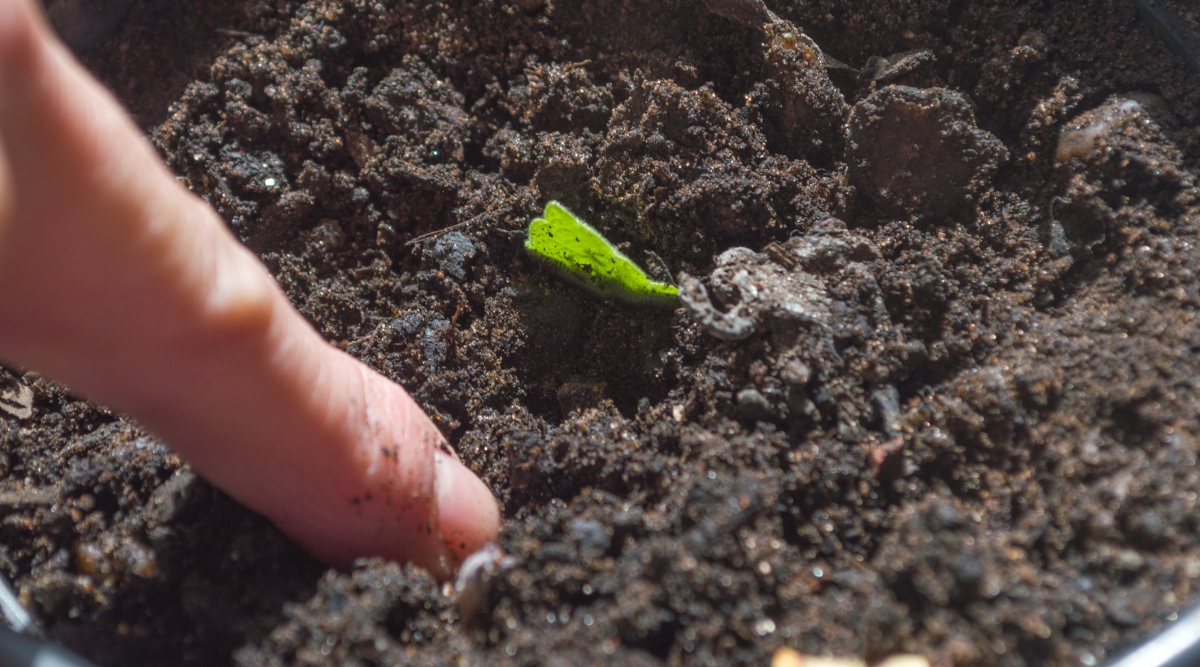

Though microclover is resilient in opposition to drought as an grownup, the brand new little one crops are fragile (like most youthful crops). It’s good to maintain up the soil persistently moist all by way of germination, which might take 7-14 days.
As rapidly as a result of the seedlings sprout, take a look at the soil each few days to deal with a moisture stage similar to a wrung-out sponge. It shouldn’t be overly soggy or super-dried out. Stick your finger a variety of inches all through the soil to take a look at prior to irrigating.
You won’t ought to irrigate if seeding in an area with moist autumn or spring native climate. If it hasn’t rained shortly, use sprinklers or a hose to evenly distribute water over the yard.
7. Wait to Mow Till After it Flowers and Gadgets Seed
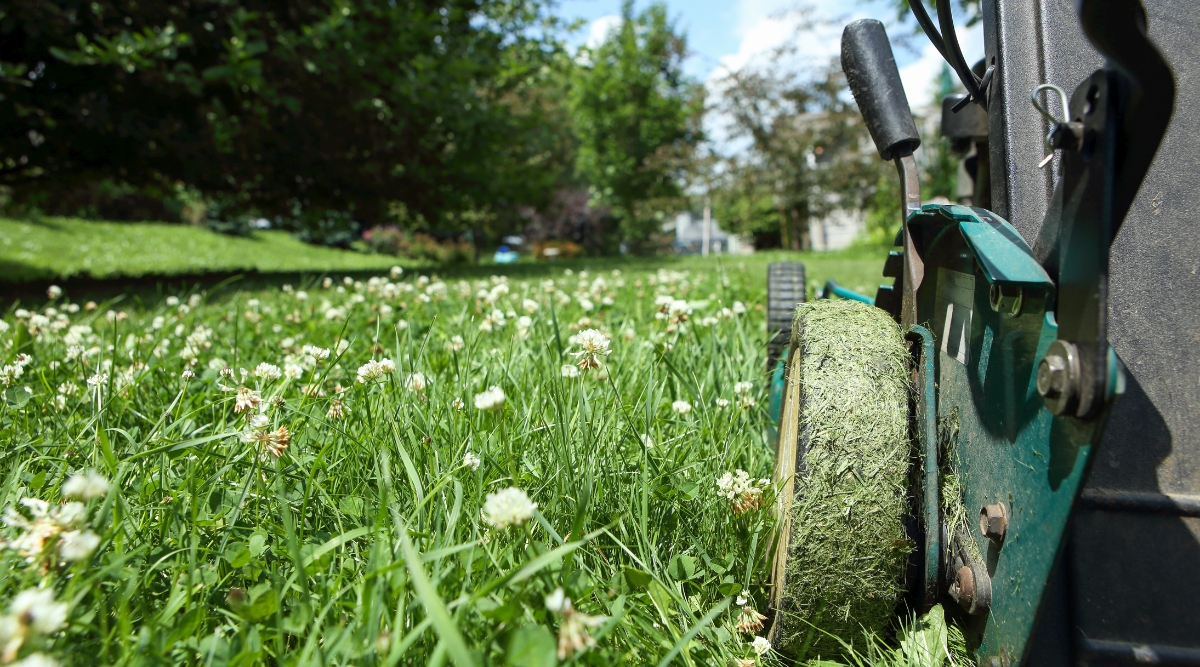

Now, you will sit as soon as extra and loosen up whereas your microclover prospers! You shouldn’t mow the yard till the clover produces its first spherical of flowers after which inserts to seed. When you planted all through the autumn, you’ll have to wait till the following spring. When you seeded in early spring, your first mowing will maybe be midsummer.
8. Mow to 2-3”


Microclover lawns typically solely want mowing a variety of occasions per season. That’s kind of a breath of present air for anybody used to mow a high-maintenance yard! As rapidly as your clover is densely stuffed in and established, you will mow it further for mainly in all probability probably the most manicured look. Nevertheless, frequently defend a minimal of two” of development to confirm the crowns of the crops can develop as soon as extra.
Last Ideas
Altering your yard with microclover is a fast and painless course of which is able to cease a lot water and upkeep ultimately! All that it’s essential to do is select a technique for killing the grass, put collectively and amend the soil, scatter your seeds densely (and shallowly!), then water them in!
Don’t mow till the clover has reached 3-4” and gone through one flowering cycle. Be mindful, microclover is drought-tolerant nonetheless needs quite a lot of water in the course of the first few months of development.
